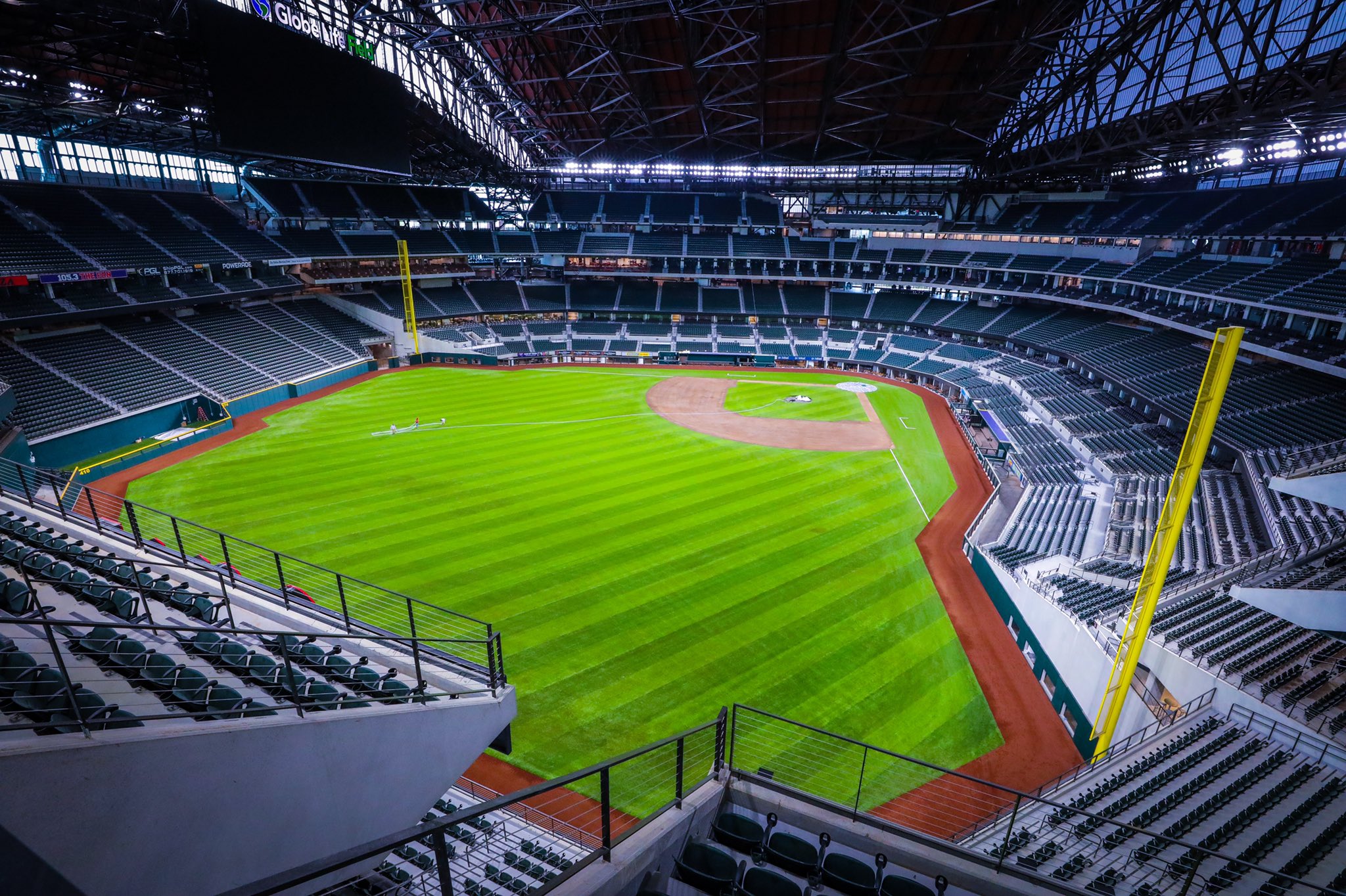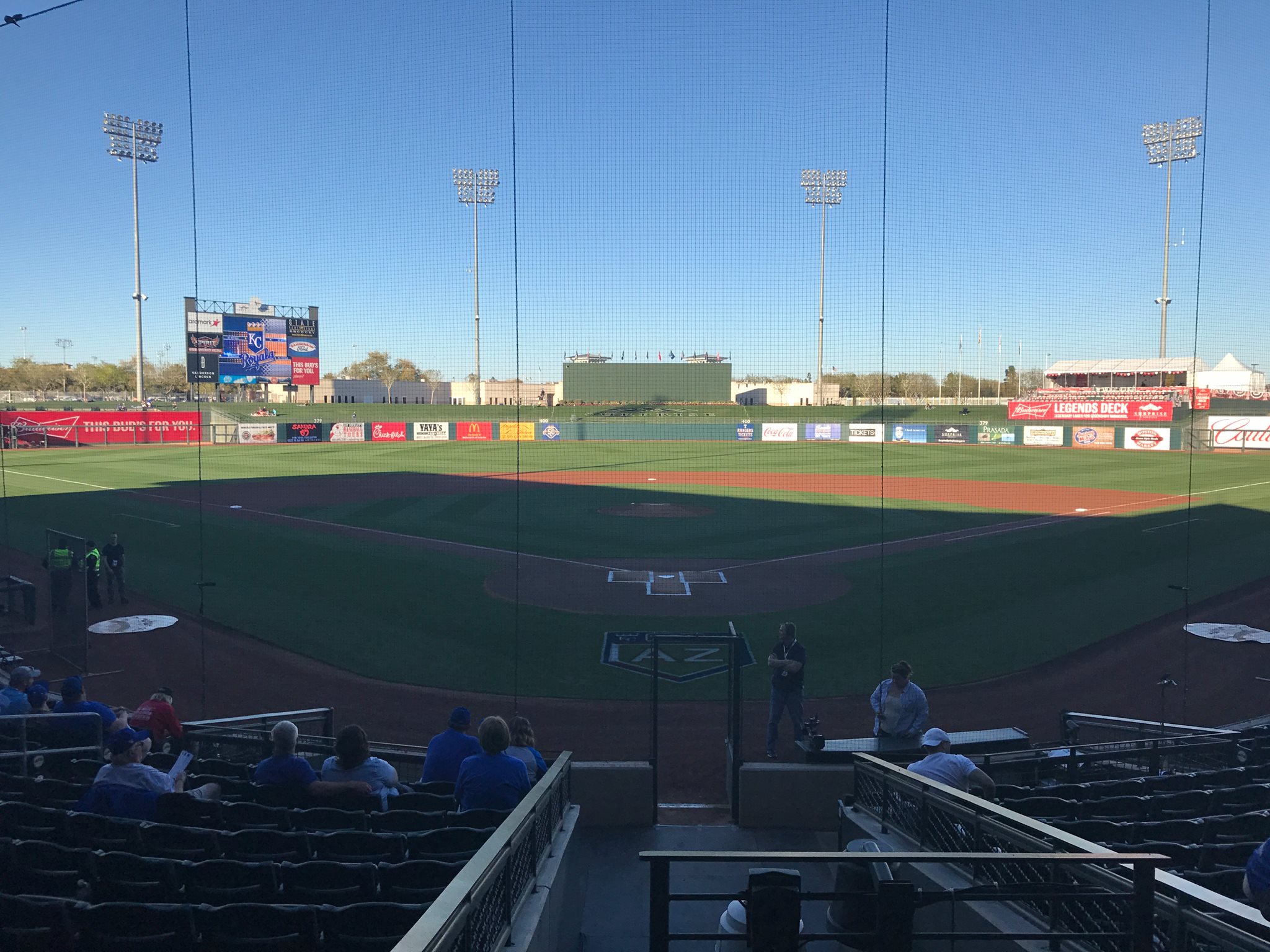
Globe Life Field
Texas Rangers
Major League
TL;DR? Here’s the long-form piece in a nutshell:
Let’s get one thing out of the way: I love all ballparks. I did not create this site to hate. I’ve already had great times at Globe Life Field, and it has some redeeming qualities.
But it is the most disappointing new MLB ballpark since New Comiskey in 1991, combining many of the worst trends in stadium design.
First of all, GLF follows the Truist Park (Atlanta) mallpark model of building an almost offensively generic stadium and attaching it to manufactured mixed-use development. Prioritizing utility over charm, dubbed “more Events Center than Ballpark,” GLF has no design goal beyond generating revenue and fabricating experiential aesthetics, with little attention paid to timeless visual aesthetics.
The much-maligned exterior façade ranges from ugly to pedestrian, lacking any distinctive design cues. Think warehouse attached to a suburban office park. Even in its best spots, this could be an expansion team’s ballpark in “Anywhere, USA.”
The interior is totally nondescript, bereft of any signature elements, interesting views, or overarching aesthetic vision. Compared to retractable roof ballparks in Houston or Seattle that sport skyline views when open, or the much more innovative new retractable roof concepts out there, GLF falls short. Zero personality. The sole bright spot are the archways on the left field concourse, but crucially, they not visible from the seating bowl.
The salience of GLF’s lack of aesthetic character and charm is heightened because it replaced the beautiful Ballpark in Arlington, which had curb appeal rivaling any ballpark in baseball outside and a distinctive white steel backdrop inside.
Even for an aesthetically uninspired mallpark, GLF isn’t even a fun mallpark for the average fan, because most of the amenities are concentrated toward premium. That stings.
While improved for 2022, the food options are terrible; the craft beer is below average; the park mostly lacks destination social spaces throughout the concourses; there are no in-park, non-premium restaurants; the team historical tributes aren’t extensive; and the kids’ area is one of MLB’s most rudimentary. I want to emphasize that this was all planned before COVID-19. The Rangers point to Texas Live! outside the park, but there needs to be more within GLF’s confines.
Compare this Atlanta’s Truist Park, where the fan-friendly features inside the park are so elaborate that they offset the pedestrian mallpark structure.
Perhaps most importantly, GLF has the most fan-unfriendly seating bowl design in baseball, where fans cannot access the entirety of the lower bowl and lower bowl concourse in between the foul poles without an appropriate premium ticket! That’s even worse than Yankee Stadium, which has been much-maligned on this point.
On the plus side, GLF is functional, and I don’t mean that as an insult. Climate control. Excellent sightlines. Wide seats. Not one, but two wide 360-degree concourses open to the field. Top-of-the-line tech. And some other bright spots listed in the “hits” column below.
In sum, GLF is defined by 1) its mallpark philosophy, 2) unremarkable aesthetics inside and out, 3) poor amenities for regular fans, and 4) a fan-unfriendly seating structure designed to exclude regular fans from the lower bowl unlike ever before.
Sure, fans are now out of the heat, but at what cost? $1.2 billion, actually! That’s a lot of money for air conditioning and a structure that has less character and is less fan-friendly than its predecessor!

